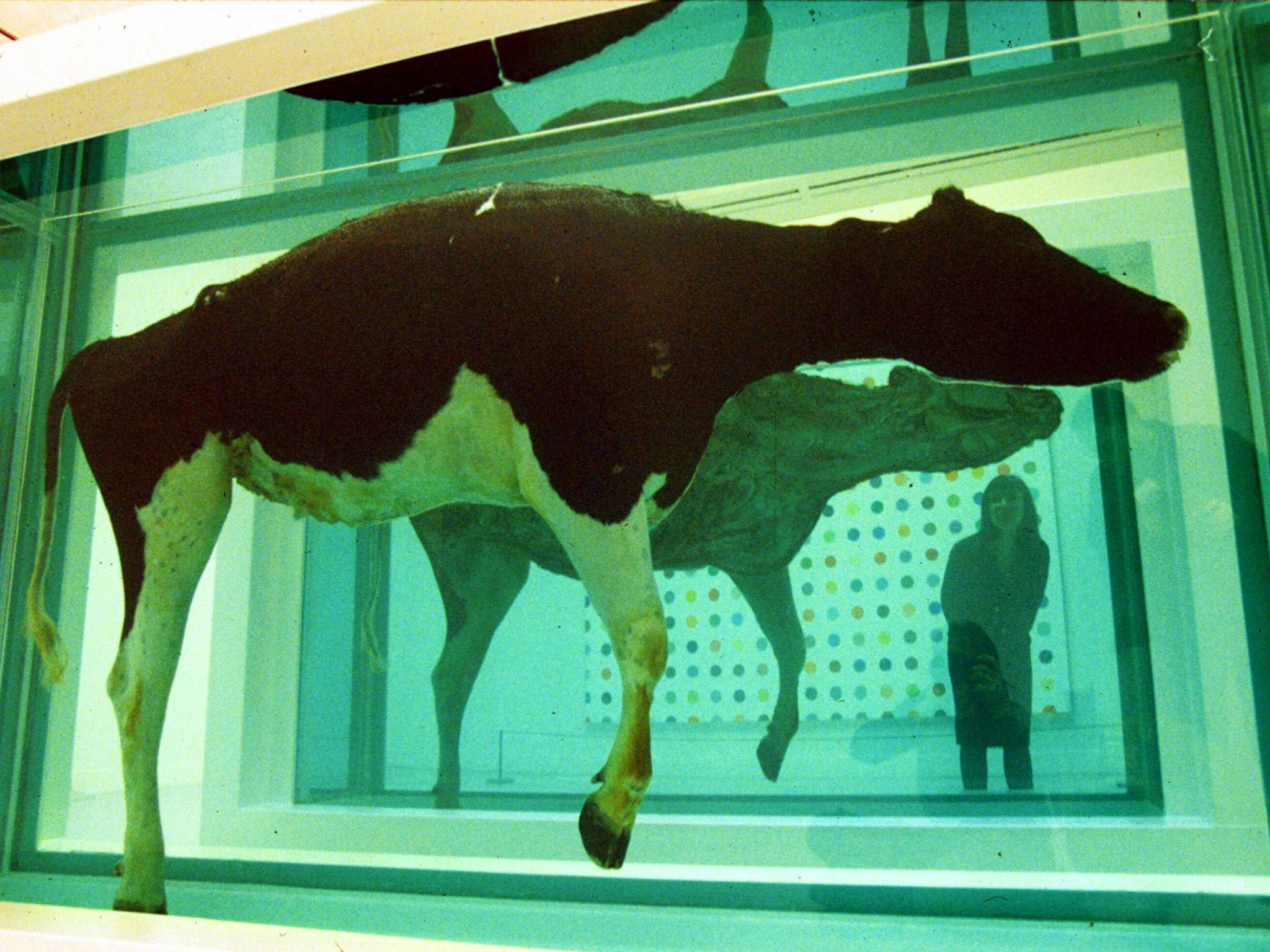Damien Hirst Tate exhibition found to have leaked cancer-causing fumes
Tate insists that it 'always puts safety first' but Hirst's pickled animal installations were potentially hazardous

Damien Hirst’s pickled animal exhibition might have won him kudos from the critics, but investigators have revealed that it leaked dangerous fumes.
The artist’s Turner Prize-winning “Mother and Child Divided” installation featured the bisected corpses of a cow and calf in closed tanks, preserved by formaldehyde solution. It was on display for five months at the Tate Modern in 2012, along with “Away From the Flock”, which features a whole sheep submerged in the same fluid.
Investigators have used sensors to confirm that leakage from the tanks reached 5ppm (parts per million), an amount ten times higher than the advisory limit. Formaldehyde has the potential to worsen asthma symptoms and even cause cancer.
“It should be noted the maximum FA (formaldehyde) level tolerated by regulatory agencies in the air of a room should be no higher than 0.5ppm,” read the report, published in a Royal Society of Chemistry journal.
Damien Hirst's artworks
Show all 13
Hirst, who was commissioned by Charles Saatchi in 1991, was reportedly advised to use alcohol to protect his artworks. He chose to use formaldehyde instead for its hazardous, skin-burning properties. The exhibition summary on Tate’s website states that Hirst was attracted to the compound because “if you breathe it in it chokes you and it looks like water”. He claimed to be using it to “communicate an idea”, rather than as a preservative.
Hirst’s company Science Ltd insists it is “completely baffled” by the recent report. “We do regular testing and our experts tell us that at 5ppm your eyes would be streaming and you would be in serious physical discomfort,” a spokesperson said. “No such complaints were made to us during the show, or at any other shows featuring the formaldehyde works. We don’t believe any risk was posed to the public. However, we are looking into the matter.”
Tate Modern has commented on the recent findings, insisting that the gallery “always puts the safety of its staff and visitors first”. “We take all necessary precautions when installing and displaying our exhibitions,” a spokesperson said. “These works contained a very dilute formaldehyde solution that was contained within sealed tanks.”
The investigators who undertook this research have now also released a statement, with Professor Pier Giorgio Righetti clarifying: “The research from Dr. Zilberstein’s team and myself was intended to test the uses of a new sensor for measuring formaldehyde fumes and we do not believe that our findings suggest any risk to visitors at Tate Modern.”
Tate has been criticised for its handling of health and safety issues before, most notably in 2010 when the dust from Ai Weiwei’s millions of ceramic sunflower seeds was declared potentially carcinogenic. The exhibition had to be closed.
Subscribe to Independent Premium to bookmark this article
Want to bookmark your favourite articles and stories to read or reference later? Start your Independent Premium subscription today.

Join our commenting forum
Join thought-provoking conversations, follow other Independent readers and see their replies